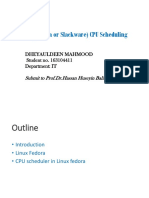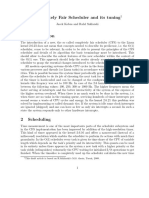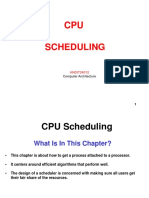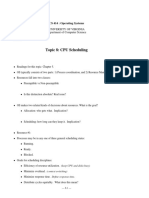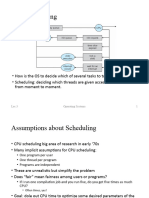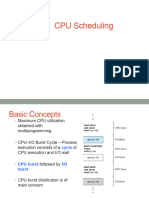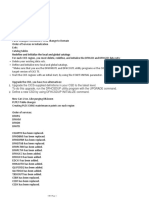0% found this document useful (0 votes)
12 views12 pagesOS - Scheduling ALgorithms
The document discusses the Completely Fair Scheduler (CFS) introduced in Linux kernel 2.6.23, which aims to maximize CPU utilization and interactive performance using a red-black tree data structure. It details how CFS maintains virtual runtimes for tasks, ensuring fair CPU allocation based on the time each task has used. Additionally, it covers time slice calculations and the differences between soft and hard real-time scheduling systems.
Uploaded by
noopur807Copyright
© © All Rights Reserved
We take content rights seriously. If you suspect this is your content, claim it here.
Available Formats
Download as PDF, TXT or read online on Scribd
0% found this document useful (0 votes)
12 views12 pagesOS - Scheduling ALgorithms
The document discusses the Completely Fair Scheduler (CFS) introduced in Linux kernel 2.6.23, which aims to maximize CPU utilization and interactive performance using a red-black tree data structure. It details how CFS maintains virtual runtimes for tasks, ensuring fair CPU allocation based on the time each task has used. Additionally, it covers time slice calculations and the differences between soft and hard real-time scheduling systems.
Uploaded by
noopur807Copyright
© © All Rights Reserved
We take content rights seriously. If you suspect this is your content, claim it here.
Available Formats
Download as PDF, TXT or read online on Scribd
/ 12

